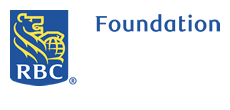Invasive plants under tarps: more effective than sweeping dust under the rug
Phragmites and geotextiles – what's the deal?
The Venise-Ouest peatland (Tourbière-de-Venise Ouest) straddles the municipalities of Venise-en-Québec and Saint-Georges-de-Clarenceville. The fauna and flora it supports are sensitive to disturbance, and right now these plants and animals are being threatened by an imposing invasive species: European common reed, commonly known as phragmites. It degrades the quality of wetland habitats, depriving animals of their natural ecosystems by displacing and outcompeting other plant species.
The Nature Conservancy of Canada (NCC), whose territory covers 380 hectares (939 acres) and includes 80 per cent of the peatland here, has launched a major project to control and eradicate the phragmites that has established itself in the peatland.
Out in the field, the first step was carried out using two recommended methods: repeated mowing and tarping, which together maximize the chances of eradicating the colonies of phragmites from the bog. The NCC team and its partners covered the whole area with large geotextile sheets, which will be left in place for several years to deprive the plants’ roots of oxygen.
These interventions, which took place at the end of August on a 0.2-hectare (0.4-acre) area, helped preserve both the ecosystem and at-risk species within it, such as halberdleaf tearthumb and swamp white oak, both of which are designated as likely to be considered threatened or vulnerable under the Quebec Act Respecting Threatened or Vulnerable Species.
Colonies of phragmites have been identified elsewhere in the natural area as well, threatening other species, such as one of the largest colonies of bog fern and white wood aster in Quebec, both designated as threatened in Quebec, and Virginia chain fern and shagbark hickory, which are likely to be designated as threatened or vulnerable under the Quebec Act Respecting Threatened or Vulnerable Species. As a result, other interventions aimed at eradicating phragmites will be planned in the coming years in order to preserve the rich and fragile ecosystem of the Venise-Ouest peatland.
The project will be conducted over five years to maintain the biodiversity of the nature reserve. After that, the site will be replanted with native species (species that were already naturally present) to preserve this unique environment.
Acknowledgements
Financial support for the conservation of this site has been provided by Government of Quebec, trough the financial support provided by the ministère de l’Environnement et de la Lutte contre les changements climatiques to Projet de partenariat pour les milieux naturels, the Fondation de la faune du Québec (FFQ) and its financial partner Hydro-Québec, the U.S. Fish and Wildlife Service, under the North American Wetlands Conservation Act, the Echo Fondation, Tourisme Venise-en-Québec - Lac Champlain, Venise-en-Québec municipality, Saint-Georges-de-Clarenceville municipality and Sauve-Garde Nature. NCC also wishes to thank the landowners involved in this conservation effort: John Sauro, the Neville family and France Larochelle.
About
The Nature Conservancy of Canada (NCC) is Canada’s leading not-for-profit private land conservation organization, working to protect our most important natural areas and the species they sustain. Since 1962, NCC has helped to protect 14 million hectares (35 million acres), coast to coast to coast, including 48,000 hectares (close to 119,00 acres) in Quebec.
The Projet de partenariat pour les milieux naturels (PPMN) is a four-year grant of more than $53 million from the Ministère de l'Environnement et de la Lutte contre les changements climatiques to NCC. It provides support for voluntary conservation initiatives to ensure the protection of natural areas of interest by establishing financial partnerships with conservation organizations in the province. The PPMN thus aims to develop and consolidate Quebec's network of protected areas on private land. It follows the Ensemble pour la nature project, which ended on March 31, 2020, and had similar objectives.
The mission of the Fondation de la faune du Québec is to promote the conservation and enhancement of wildlife and its habitats. Thanks to the contribution of more than one million hunters, fishermen and trappers in Quebec, thousands of donors, and numerous private companies, the Foundation has supported more than 2,000 organizations throughout Quebec since 1987.
The Programme Hydro-Québec pour la mise en valeur des milieux naturels is a funding program offered by the Fondation de la faune du Québec in collaboration with its financial partner Hydro-Québec. It aims to support initiatives for the enhancement, development and implementation of infrastructures that facilitate public access to natural environments while ensuring the protection of biodiversity.
The North American Wetlands Conservation Act (NAWCA) is a program administered by the U.S. Fish and Wildlife Service.
Learn More
Follow us on Twitter: twitter.com/NCC_CNC | twitter.com/NCC_CNCMedia
Find us on Facebook
- 30 -





